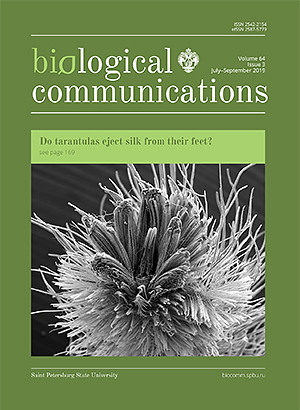Soil microbiome in chronosequence of spoil heaps of Kursk Magnetic Anomaly
DOI:
https://doi.org/10.21638/spbu03.2019.306Abstract
The physicochemical parameters, vegetation and biodiversity of microbiomes inhabiting 10-, 35- and 50-year-old embryonic soils (technozems) formed in the mining areas of the Kursk Magnetic Anomaly (Russia) were analyzed in the current study. Analysis of taxonomic diversity was carried out by 454-pyrosequencing of the V4 variable region of the 16S rRNA gene. All points of the chronosequence were characterized by microbiomes reliably differing in taxonomic composition. The older the dump, the higher the proportion of bacteria from the phyla Actinobacteria (mostly representatives of the Solirubrobacteriaceae family), Chloroflexi and Acidobacteria in the community. In 10-year-old dumps, bacteria from the phyla Proteobacteria, Gemmatimonadetes and Bacteroides prevailed. The most pronounced changes in the community structure at the early and middle stages of microbiological succession were demonstrated by bacteria from the genus Delftia, which may indicate their active role in the processes of soil formation in this ecosystem.
Keywords:
microbial communities, embryonic soils, 454-pyrosequencing, 16S rRNA, overburden rock dumps
Downloads
References
Downloads
Published
How to Cite
Issue
Section
License
Articles of Biological Communications are open access distributed under the terms of the License Agreement with Saint Petersburg State University, which permits to the authors unrestricted distribution and self-archiving free of charge.





